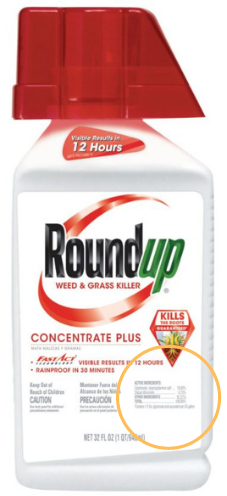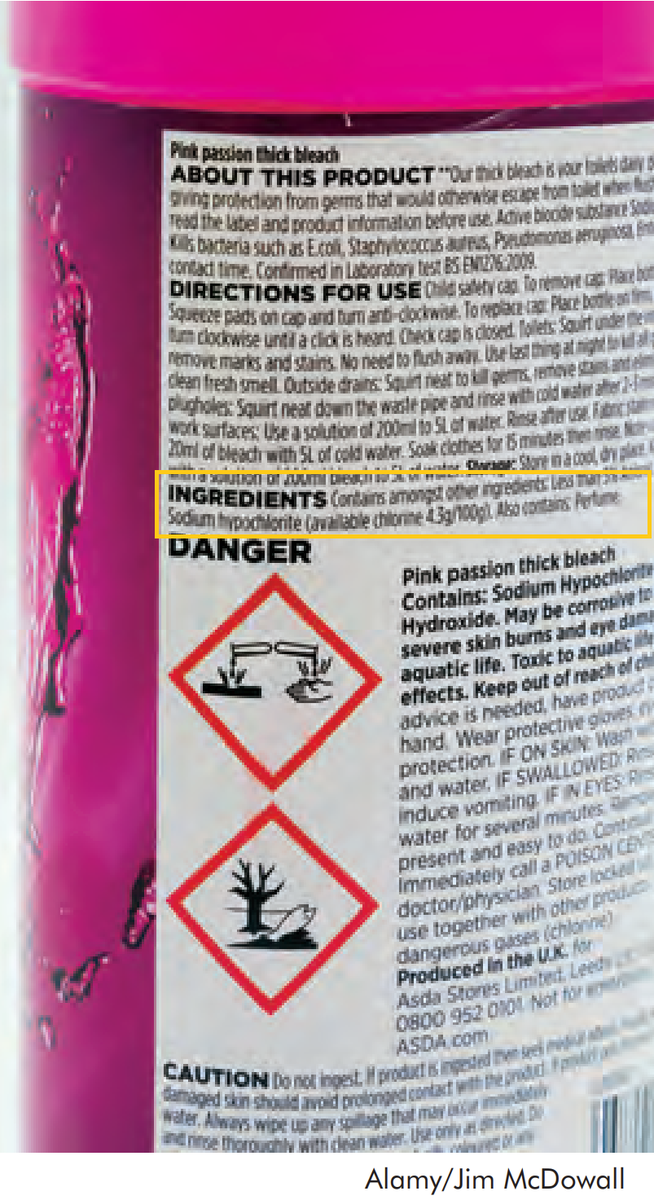Gateway on Pesticide Hazards and Safe Pest Management
How To Find Ingredients in Pesticide Products
Beyond Pesticides offers resources below to evaluate the health and ecological effects of specific chemical exposure from ACTIVE INGREDIENTS in pesticide products, as well as regulatory information and supporting scientific documents. Because various pesticide products can contain more than one active ingredient, it is important to READ the LABEL to determine chemical components.
With 192 different active ingredients and counting, it is essential to establish the connection between the use of these chemicals and their respective hazards.
View the step-by-step guide on how to search for the active ingredient(s) in pesticide products below:
- Go to U.S. EPA's Pesticide Product and Label System and enter the product name. The generic product name may vary.
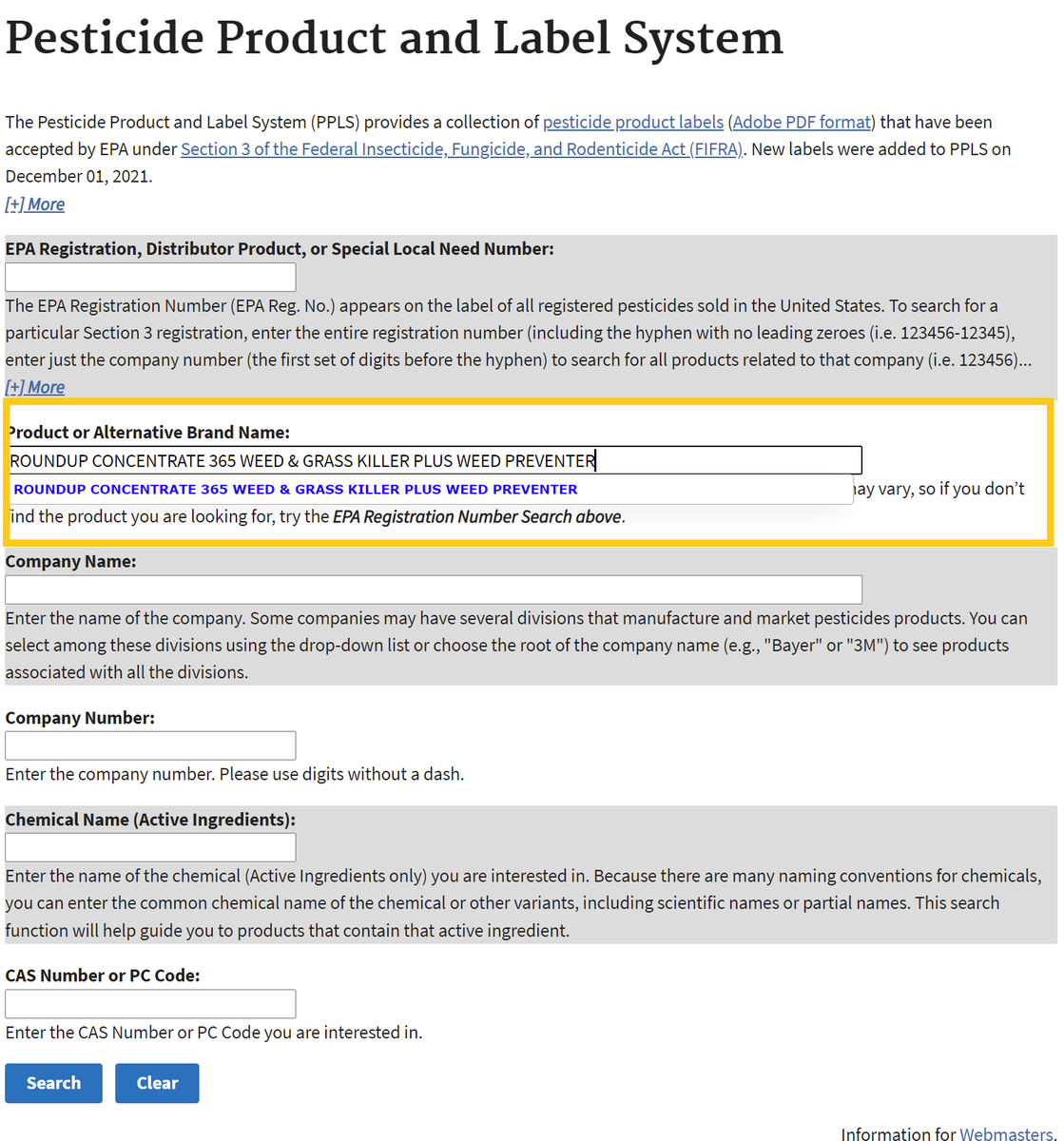
- After searching, click on the chemical ingredients tab or the link for the most recent label to find Active Ingredients.
Chemical List Label List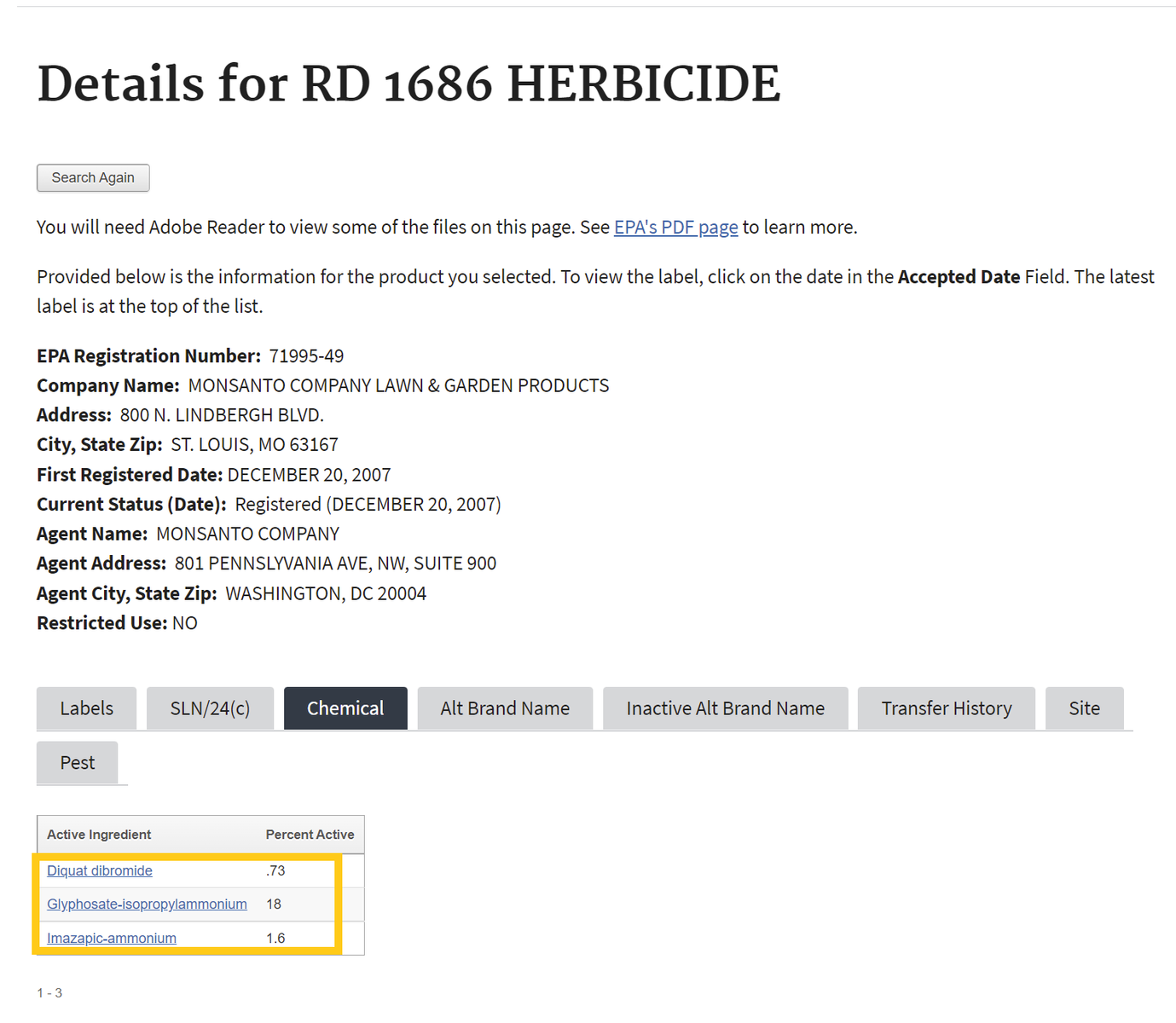
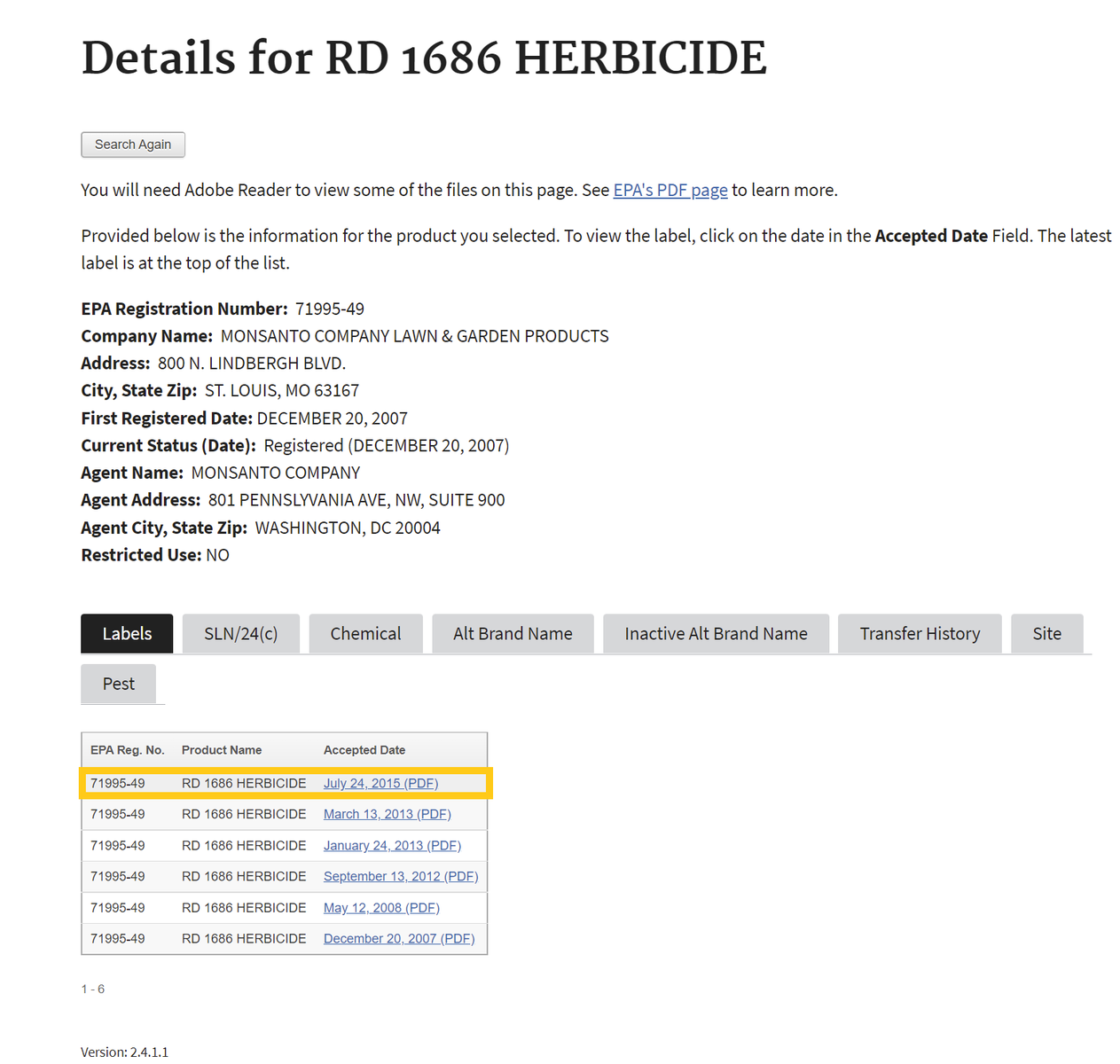
If one selects the chemical ingredients tab, skip to Step 4 . If not, proceed to step number 3 - To find the active ingredient(s) on the label, search for the page in the document containing the date of registration. Usually, the active ingredients section occurs within the first few pages of the label document.
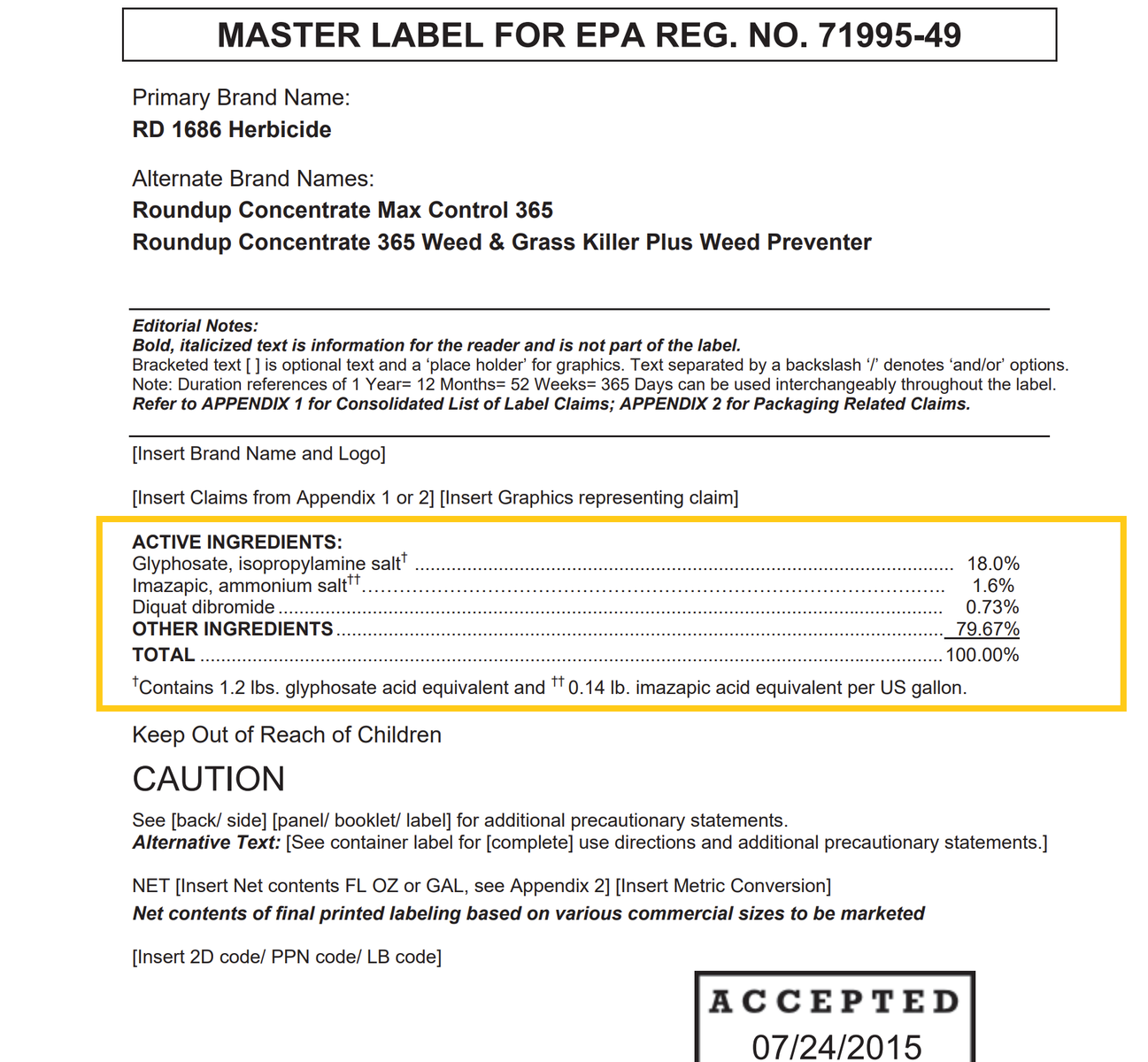
- Return to the Beyond Pesticides Gateway and search for the active ingredient name in the yellow box to the right or from the list below.
Fipronil
General Information
- Fact Sheet: Fipronil.pdf
- Product Names:
- Chemical Class: Phenyl pyrazole insecticide
- Uses: Residential baits and gels, agriculture, golf courses
- Alternatives: Least Toxic Baits and Gels, Organic Agriculture, Golf Courses
- Beyond Pesticides rating: Toxic
Health and Environmental Effects
- Cancer: Possible (10)
- Endocrine Disruption: Yes (36)
- Reproductive Effects: Yes (7)
- Neurotoxicity: Yes (7)
- Kidney/Liver Damage: Yes (7)
- Sensitizer/ Irritant: Yes (7)
- Birth/Developmental: Not documented
- Detected in Groundwater: Not documented
- Potential Leacher: Not documented
- Toxic to Birds: Yes (7, 27)
- Toxic to Fish/Aquatic Organisms: Yes (7, 27)
- Toxic to Bees: Yes (7, 27)
Residential Uses as Found in the ManageSafe™ Database
Additional Information
- Regulatory Status:
- Supporting information:
- Daily News Blog Entries (Beyond Pesticides)
- NCAP Fipronil Factsheet (Northwest Coalition for Alternatives to Pesticides)
- NPIC Fipronil Factsheet (National Pesticide Information Center)
- PAN Pesticides Database: Fipronil (Pesticide Action Network)
- Studies:
- Effects of neonicotinoids and fipronil on non-target invertebrates. [Pisa,LW, Amaral-Rogers, V et al. 2015. Environ SCi and Poll Res. 22(1):68-102]
- Fipronil-induced disruption of thyroid function in rats is mediated by increased total and free thyroxine clearances concomitantly to increased activity of hepatic enzymes. Leghait J, et al. 2009. Toxicology
- Reproductive adverse effects of fipronil in Wistar rats. Ohi et al. 2004. Toxicology Letters
- Human exposure to fipronil from dogs treated with frontline. Jennings, K.A. 2002. Vet Hum Toxicol
- Diverse neurotoxicants target the differentiation of embryonic neural stem cells into neuronal and glial phenotypes.. Slotkin TA, Skavicus S, Card J, et al. 2016. Toxicology. 372:42-51
- Pesticides are the dominant stressors for vulnerable insects in lowland streams. Liess, M., Liebmann, L., Vormeier, P., Weisner, O., Altenburger, R., Borchardt, D., Brack, W., Chatzinotas, A., Escher, B., Foit, K. and Gunold, R. Water Research, 201, p.117262.
- Behavioral Effects of the Mixture and the Single Compounds Carbendazim, Fipronil, and Sulfentrazone on Zebrafish (Danio rerio) Larvae. Gomes, S. da S. et al. (2024) Behavioral effects of the mixture and the single compounds carbendazim, fipronil, and sulfentrazone on zebrafish (danio rerio) larvae, Biomedicines. Available at: https://www.mdpi.com/2227-9059/12/6/1176.
- Neurotoxicity of fipronil affects sensory and motor systems in zebrafish. Wu, C.H. et al. (2021) Neurotoxicity of fipronil affects sensory and motor systems in zebrafish, Pesticide Biochemistry and Physiology. Available at: https://www.sciencedirect.com/science/article/abs/pii/S0048357521001279.
- Residues of agrochemicals in beebread as an indicator of landscape management. Bogo, G. et al. (2024) Residues of agrochemicals in beebread as an indicator of landscape management, Science of The Total Environment. Available at: https://www.sciencedirect.com/science/article/abs/pii/S0048969724042232?via%3Dihub.
- Exposure to pesticides, persistent and non − persistent pollutants in French 3.5-year-old children: Findings from comprehensive hair analysis in the ELFE national birth cohort. Macheka, L. et al. (2024) Exposure to pesticides, persistent and non − persistent pollutants in French 3.5-year-old children: Findings from comprehensive hair analysis in the ELFE national birth cohort, Environment International. Available at: https://www.sciencedirect.com/science/article/pii/S0160412024004677.
- Thyroid under Attack: The Adverse Impact of Plasticizers, Pesticides, and PFASs on Thyroid Function. Rodrigues, V.G. et al. (2024) Thyroid under Attack: The Adverse Impact of Plasticizers, Pesticides, and PFASs on Thyroid Function, Endocrines. Available at: https://www.mdpi.com/2673-396X/5/3/32.
- Impact of Endocrine Disrupting Pesticide Use on Obesity: A Systematic Review. Pérez-Bermejo, M. et al. (2024) Impact of Endocrine Disrupting Pesticide Use on Obesity: A Systematic Review, Biomedicines. Available at: https://www.mdpi.com/2227-9059/12/12/2677.
- Pesticide-Induced Inflammation at a Glance. Lopes-Ferreira, M. et al. (2023) ‘Pesticide-induced inflammation at a glance’, Toxics, 11(11), p. 896. doi:10.3390/toxics11110896.
- Environmental fate and exposure; neonicotinoids and fipronil. Bonmatin, JM., Giorio, C., Girolami, V. et al. Environmental fate and exposure; neonicotinoids and fipronil. Environ Sci Pollut Res 22, 35–67 (2015). https://doi.org/10.1007/s11356-014-3332-7
- High prevalence of veterinary drugs in bird's nests. Tassin de Montaigu, C. et al. (2025) High prevalence of veterinary drugs in bird’s nests, Science of The Total Environment. Available at: https://www.sciencedirect.com/science/article/pii/S0048969725000737.
- An update of the Worldwide Integrated Assessment (WIA) on systemic insecticides. Pisa, L., Goulson, D., Yang, EC. et al. An update of the Worldwide Integrated Assessment (WIA) on systemic insecticides. Part 2: impacts on organisms and ecosystems. Environ Sci Pollut Res 28, 11749–11797 (2021). https://doi.org/10.1007/s11356-017-0341-3
- Behavioral response and gene expression changes in fipronil-administered male Japanese quail (Coturnix japonica). Samah R. Khalil, Ashraf Awad, Hesham H. Mohammed, Behavioral response and gene expression changes in fipronil-administered male Japanese quail (Coturnix japonica), Environmental Pollution, Volume 223, 2017, Pages 51-61, ISSN 0269-7491, https://doi.org/10.1016/j.envpol.2016.12.027.
- Assessing the Risk of Fipronil-Treated Seed Ingestion and Associated Adverse Effects in the Red-Legged Partridge. Lopez-Antia, A. et al. (2015) Assessing the Risk of Fipronil-Treated Seed Ingestion and Associated Adverse Effects in the Red-Legged Partridge, Environmental Science & Technology. Available at: https://pubs.acs.org/doi/10.1021/acs.est.5b03822.
- Pesticide effects on nitrogen cycle related microbial functions and community composition. Sim, J. X. F., Doolette, C. L., Vasileiadis, S., Drigo, B., Wyrsch, E. R., Djordjevic, S. P., Donner, E., Karpouzas, D. G., & Lombi, E. (2022). Pesticide effects on nitrogen cycle related microbial functions and community composition. The Science of the total environment, 807(Pt 1), 150734. https://doi.org/10.1016/j.scitotenv.2021.150734
- Broad-scale pesticide screening finds anticoagulant rodenticide and legacy pesticides in Australian frogs. Rowley, J. et al. (2024) Broad-scale pesticide screening finds anticoagulant rodenticide and legacy pesticides in Australian frogs, Science of The Total Environment. Available at: https://www.sciencedirect.com/science/article/pii/S004896972402672X.
- Characterizing pyrethroid and fipronil concentrations in biosolids. Wheeler, J., Black, G. P., Hladik, M. L., Sanders, C. J., Teerlink, J., Wong, L., Zhang, X., Budd, R., & Young, T. M. (2025). Characterizing pyrethroid and fipronil concentrations in biosolids. The Science of the total environment, 969, 178954. https://doi.org/10.1016/j.scitotenv.2025.178954
- Systemic insecticides (neonicotinoids and fipronil): trends, uses, mode of action and metabolites. Simon-Delso, N., Amaral-Rogers, V., Belzunces, L.P. et al. Systemic insecticides (neonicotinoids and fipronil): trends, uses, mode of action and metabolites. Environ Sci Pollut Res 22, 5–34 (2015). https://doi.org/10.1007/s11356-014-3470-y
- Pet dogs transfer veterinary medicines to the environment. Diepens, Noël & Belgers, Dick & Buijse-Bogdan, Laura & Roessink, Ivo. (2022). Pet dogs transfer veterinary medicines to the environment. Science of The Total Environment. 858. 159550. 10.1016/j.scitotenv.2022.159550.
- American Healthy Homes Survey: A National Study of Residential Pesticides Measured from Floor Wipes. Stout, D. M., 2nd, Bradham, K. D., Egeghy, P. P., Jones, P. A., Croghan, C. W., Ashley, P. A., Pinzer, E., Friedman, W., Brinkman, M. C., Nishioka, M. G., & Cox, D. C. (2009). American Healthy Homes Survey: a national study of residential pesticides measured from floor wipes. Environmental science & technology, 43(12), 4294–4300. https://doi.org/10.1021/es8030243
- Effects of neonicotinoids and fipronil on non-target invertebrates. Pisa, L. W., Amaral-Rogers, V., Belzunces, L. P., Bonmatin, J. M., Downs, C. A., Goulson, D., Kreutzweiser, D. P., Krupke, C., Liess, M., McField, M., Morrissey, C. A., Noome, D. A., Settele, J., Simon-Delso, N., Stark, J. D., Van der Sluijs, J. P., Van Dyck, H., & Wiemers, M. (2015). Effects of neonicotinoids and fipronil on non-target invertebrates. Environmental science and pollution research international, 22(1), 68–102. https://doi.org/10.1007/s11356-014-3471-x
- Bioaccumulation of pesticide contaminants in tissue matrices of dogs suffering from malignant canine mammary tumors in Punjab, India. Gautam, S., Sood, N. K., Gupta, K., Joshi, C., Gill, K. K., Kaur, R., & Chauhan, I. (2020). Bioaccumulation of pesticide contaminants in tissue matrices of dogs suffering from malignant canine mammary tumors in Punjab, India. Heliyon, 6(10), e05274. https://doi.org/10.1016/j.heliyon.2020.e05274
- Pesticide contamination is associated with invertebrate community change in non-agricultural streams. Schweiger, L. et al. (2025) Pesticide contamination is associated with invertebrate community change in non-agricultural streams, Water Research. Available at: https://www.sciencedirect.com/science/article/pii/S0043135425008115.
- Fipronil washoff to municipal wastewater from dogs treated with spot-on products. Teerlink, J., Hernandez, J., & Budd, R. (2017). Fipronil washoff to municipal wastewater from dogs treated with spot-on products. The Science of the total environment, 599-600, 960–966. https://doi.org/10.1016/j.scitotenv.2017.04.219
- Risks of large-scale use of systemic insecticides to ecosystem functioning and services. Chagnon, M., Kreutzweiser, D., Mitchell, E. A., Morrissey, C. A., Noome, D. A., & Van der Sluijs, J. P. (2015). Risks of large-scale use of systemic insecticides to ecosystem functioning and services. Environmental science and pollution research international, 22(1), 119–134. https://doi.org/10.1007/s11356-014-3277-x
- Occurrence of Current-Use Pesticides in Paired Indoor Dust, Drinking Water, and Urine Samples from the United States: Risk Prioritization and Health Implications. Xie, Y., Li, J., Salamova, A., & Zheng, G. (2025). Occurrence of Current-Use Pesticides in Paired Indoor Dust, Drinking Water, and Urine Samples from the United States: Risk Prioritization and Health Implications. Environmental science & technology, 59(25), 12507–12519. https://doi.org/10.1021/acs.est.5c00961
- Occurrence of Fipronil in residential house dust in the presence and absence of pets: a hint for a comprehensive toxicological assessment. Testa, C. et al. (2019) ‘Occurrence of Fipronil in residential house dust in the presence and absence of pets: a hint for a comprehensive toxicological assessment’, Journal of Environmental Science and Health, Part B, 54(6), pp. 441–448. doi: 10.1080/03601234.2019.1607133.
- Pesticide Prioritization by Potential Biological Effects in Tributaries of the Laurentian Great Lakes. Oliver, S.K., Corsi, S.R., Baldwin, A.K., Nott, M.A., Ankley, G.T., Blackwell, B.R., Villeneuve, D.L., Hladik, M.L., Kolpin, D.W., Loken, L., DeCicco, L.A., Meyer, M.T. and Loftin, K.A. (2023), Pesticide Prioritization by Potential Biological Effects in Tributaries of the Laurentian Great Lakes. Environ Toxicol Chem, 42: 367-384. https://doi.org/10.1002/etc.5522








.png)
